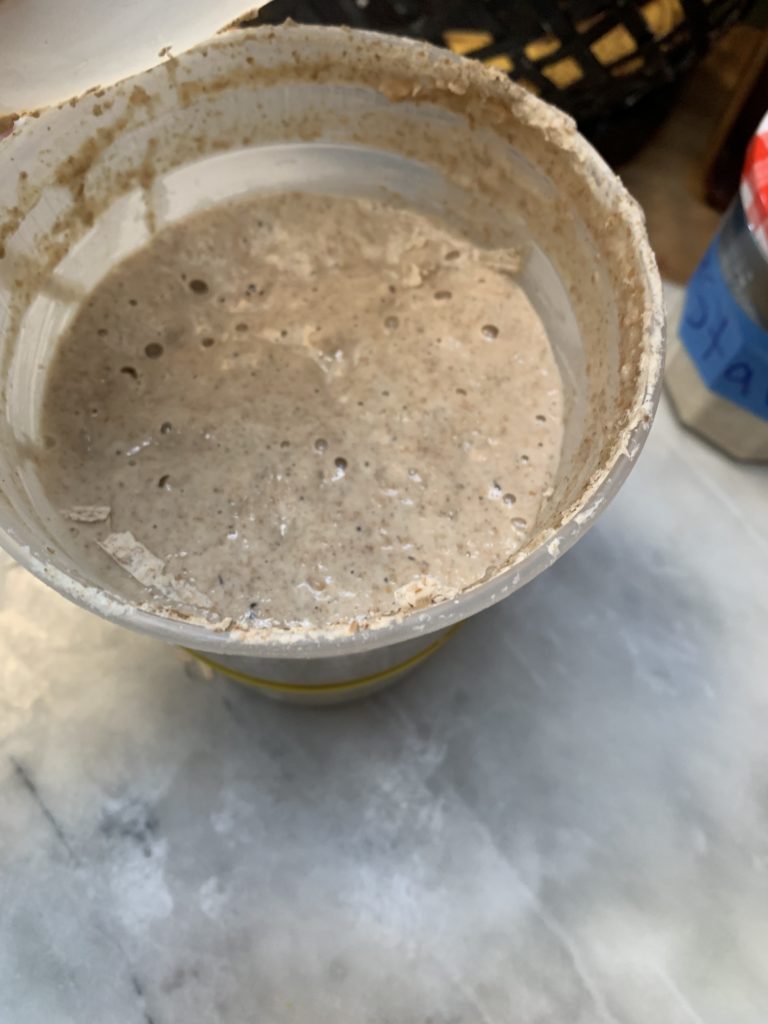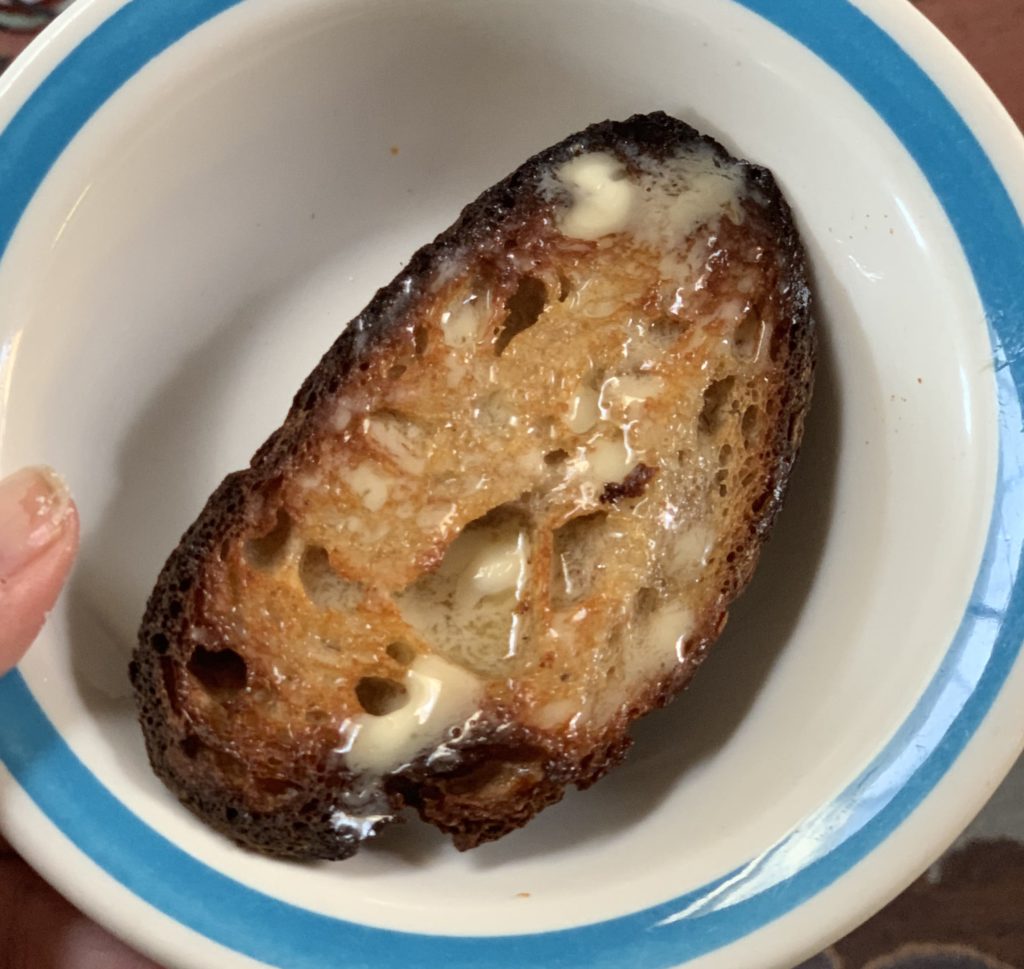A Sourdough Story: Part 1

Somehow the sourdough mojo took hold of me. I wasn’t ever a sourdough shopper; seeking out good sourdough bread hasn’t been important to me. But, as of two weeks ago, making good sourdough bread is a whole different story.
Seeing my third born son Luca’s newfound bread-baking practice intrigued me. He was proud of his own homemade sourdough starter (the bread leavener used instead of packaged yeast) made simply with flour, water and time. He seemed mystified by its power, and positively patient with the process. Then he started producing loaves: real, delicious, complex and healthy loaves. He shared some of his starter with me, and then we made a loaf together. His dexterity and confidence with the dough drew me in. I understood little about this “recipe,” even though I’d made many loaves of white bread with commercial yeast over the years. He shared his findings with me as I fumbled along. Friends and experts who watched me struggle offered advice. I stuck with the Luca plan.

I tried to make my own starter, ½ cup rye flour and 1/3 cup tepid water, mixed together and left on the countertop to be fed with more flour and water once per day over seven days. I started reading books, blogs, and instagram posts. Texts to and from my son were voluminous. I didn’t feel up to the nerdy science chops needed for success, and also felt overwhelmed by the nuance, minute instructions, the weighing, the grams, and the dexterity, which all seemed out of my grasp. Plus my starter never took hold that week. When Luca came over to investigate, he discovered a few problems. My mixture was too thin, not blended enough, the container too full, and with very little evidence of bubbling, alive, activity. He started mixing it up and adding more flour and water.
I became very vigilant, and when I spotted bubbling yeasty life, I got right to it. My first loaf was perfection—the definition of beginners luck—even though I baked it upside down, used too much flour, and burned the top. But it was enough to give me confidence, and get ahold of myself too. How had men and women made bread for themselves for eons? Blogs and books didn’t intimidate them; they just jumped in with their hands and hearts and the need to feed. The next couple of loaves let me understand the rhythm of the rise and the effect of a few different flours. Repeating the whole process demystified the lifecycle of the loaf.

Here is all I know: my starter is alive. I feed it twice a week, keeping it refrigerated UNLESS I plan to bake. (Refreshing the starter and then making a loaf is a whole other chapter. Soon the starter grows too rapidly, and I end up having to discard some before the next feeding. This I have a problem with because I hate waste, which leads me down another rabbit hole: pancakes and waffles made with discarded starter.) To say I’m in deep is an understatement. Saturated in sourdough is more like it.
It just wouldn’t be helpful for me to share my recipe and process until I get it right and fully understand it all. So, my sourdough story will continue.
Most of all I encourage us all to create a self-initiated challenge, work to overcome it, and know that we can apply the same determination to the unforeseen challenges life throws our way.

